After the conclusion of World War I, most Americans became accustomed to using the more convenient paper currency after no gold coinage was issued between 1917 and 1919, and no silver dollars since 1904.
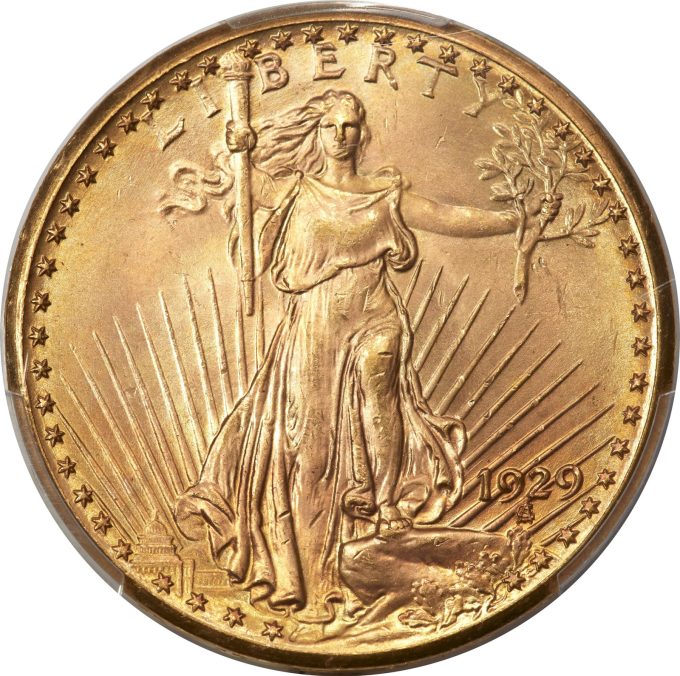
Double eagles were still produced, though, because they were better-suited for settling large accounts in foreign trade, and the government was required to back its currency with gold. The Philadelphia Mint struck nearly 1.8 million Saint-Gaudens double eagles in 1929 … of which 1.75 million never left Mint vaults, and 74 were destroyed in assay testing.
The remaining cache of 29,676 was either stored in the Mint cashier’s safe or delivered to the Treasurer’s office to help pay depositors or supply sales to collectors. Of those, 28,500 undistributed coins from the Treasurer’s office, the Cashier’s vault and untested assay remainders were returned to the Mint in 1931 to await melting with the bulk of the mintage, leaving just 1,176 of the 1929 double eagles that were ever released into private hands, no more than 350 of which have survived, with most examples in lower Mint State grades.
The 1929 Saint-Gaudens Double Eagle, MS65+ PCGS that is among the highlights in Heritage’s March 28-31 US Coins Signature® Auction is one of those rare high-grade surviving examples.
"It is exceedingly rare to find a 1929 Saint-Gaudens double eagle with such a high grade," says Todd Imhof, Executive Vice President at Heritage Auctions, "and it is nearly impossible to find one graded higher. Most of the examples were never available to the public, and of those that were, it is highly unusual to find one in the condition of the example offered here."
Another prized double eagle will be up for grabs when a 1921 Saint-Gaudens Double Eagle, MS62 PCGS crosses the block. This magnificent example is a leading condition rarity in the series, one of the few issues from the 1920s that is seen more often in circulated grades than in Mint State.
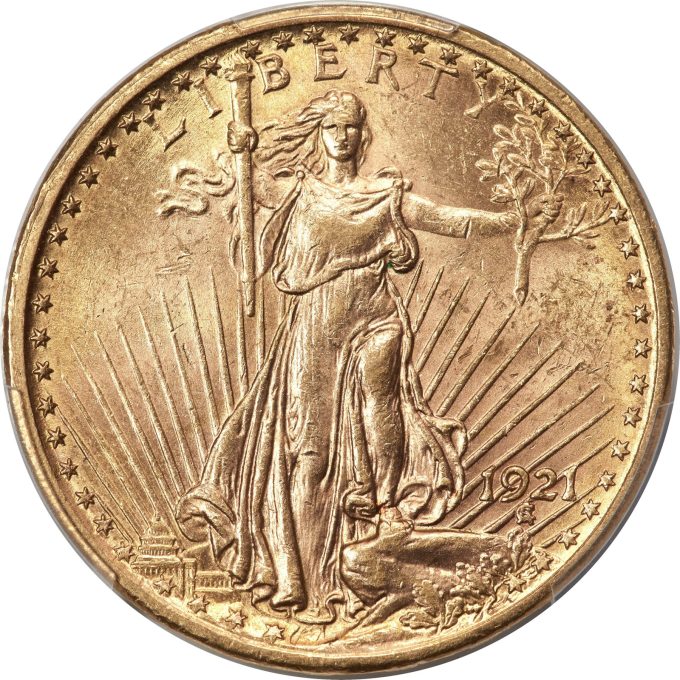
Of the 528,000 pieces originally minted, research by Roger W. Burdette suggests that 527,000 were melted under the terms of the Gold Act of 1933 … making this example an undeniable rarity. Burdette believes only 175 remain in existence.
The 1882 Double Eagle AU58 NGC, on the other hand, is a survivor from a much smaller original population. Unlike the 1883, 1884 and 1887 versions, the 1882 was not a proof-only issue, but it might as well have been, as just 571 were struck for circulation — of which maybe two dozen are believed to remain in any grade.
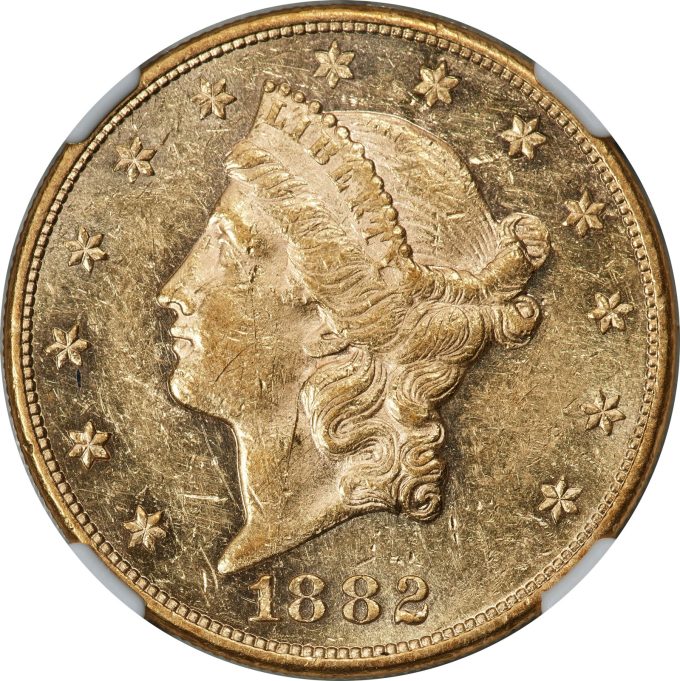
The Smithsonian Institution has two examples of the proof 1882 double eagle, but is without an example of the circulation strike. The minute number of survivors is explained, in part, by the fact that collectors at the time preferred proofs almost exclusively. This example is one of just five submitted in this grade at NGC, which reports just one graded finer.
A 1799 B-16 BB-158 Dollar, MS63 NGC is from one of the most plentiful 1799 varieties, but examples in Mint State are exceedingly rare. Fewer than a dozen BB-158 are certified MS60 or finer, including the example offered here.
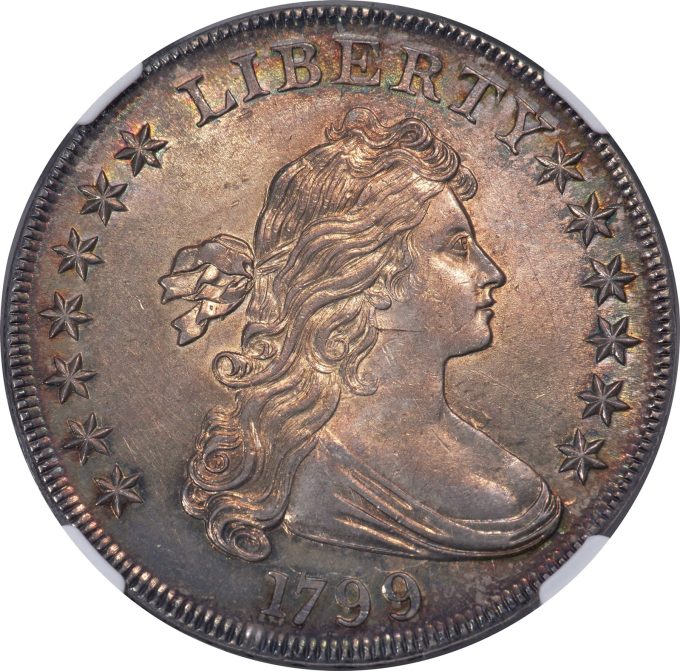
An 1860 Clark, Gruber Eagle, K-3, MS61 NGC, CAC comes from the one-time banking partnership in Leavenworth, Kansas. The 1860 Clark, Gruber & Co. ten dollar pieces, like all 1860 issues, were struck in unalloyed gold, causing the soft gold coins to wear down quickly, making examples in Mint State exceedingly rare (a small amount of silver was added to the 1861 issues to reduce the problem).
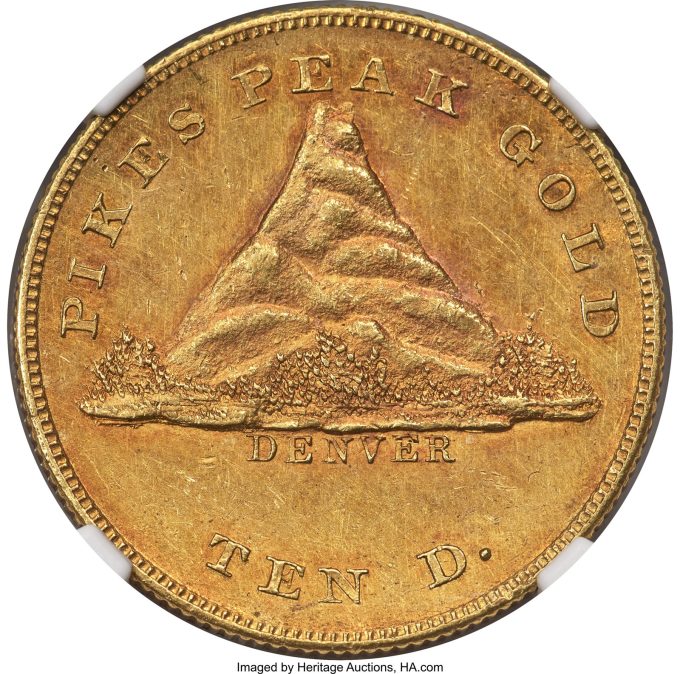
The obverse design features the artist’s conception of Pike’s Peak that was not very realistic, and subsequently was replaced the following year by the more familiary head of Liberty.
An 1853 Moffat & Co. Twenty Dollar, AU55 NGC, CAC, K-19 is one of only about 50 examples believed to have survived. Moffat twenty dollar gold pieces were produced toward the end of the Territorial gold issues of the California Gold Rush, in response to one of the recurring shortages of gold coinage that were so prevelant in the region.
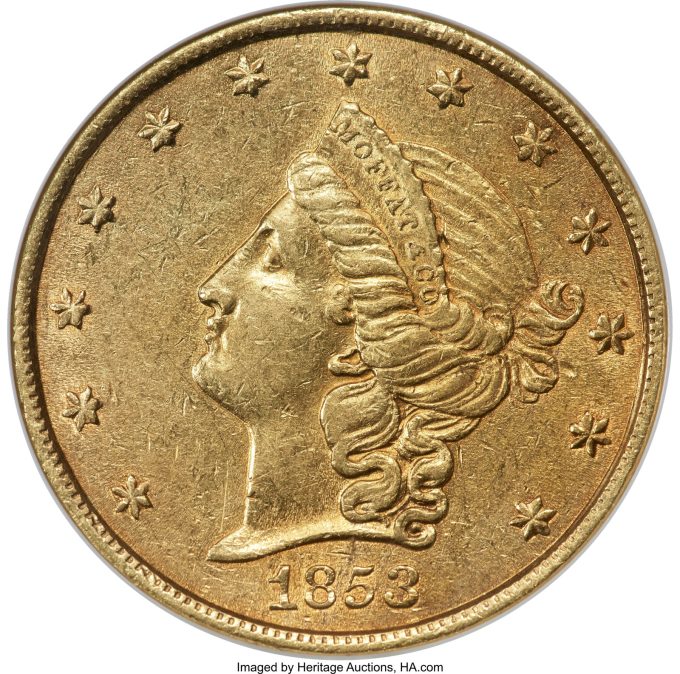
A 1793 Chain Cent, AMERICA, S-3, B-4, Low R.3, XF45 NGC represents one of five die combinations for America’s first large cent coinage. Based on Elias Boudinot’s 1795 report on the Mint, it is certain that Chief Coiner Henry Voigt engraved these early dies for the 1793 copper coins.
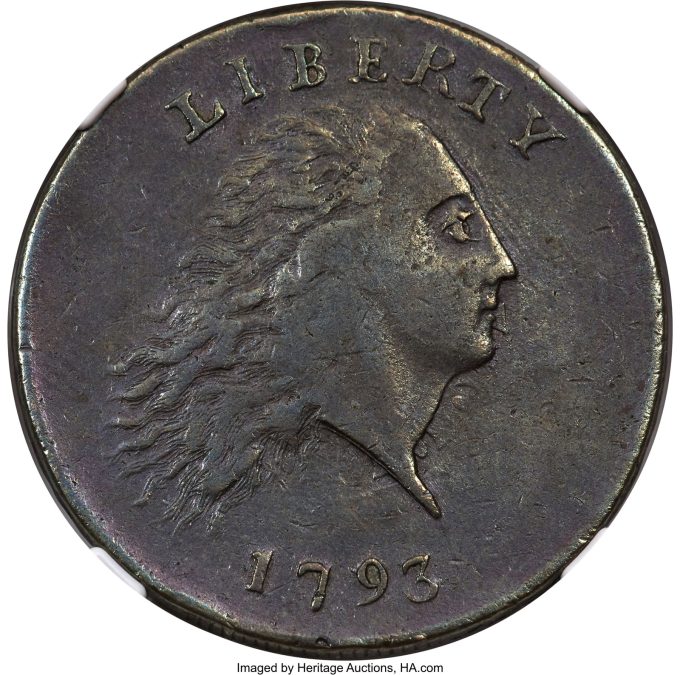
Other top lots include, but are not limited to:
- A 1915-S Panama-Pacific Round Fifty Dollar, MS65+ NGC
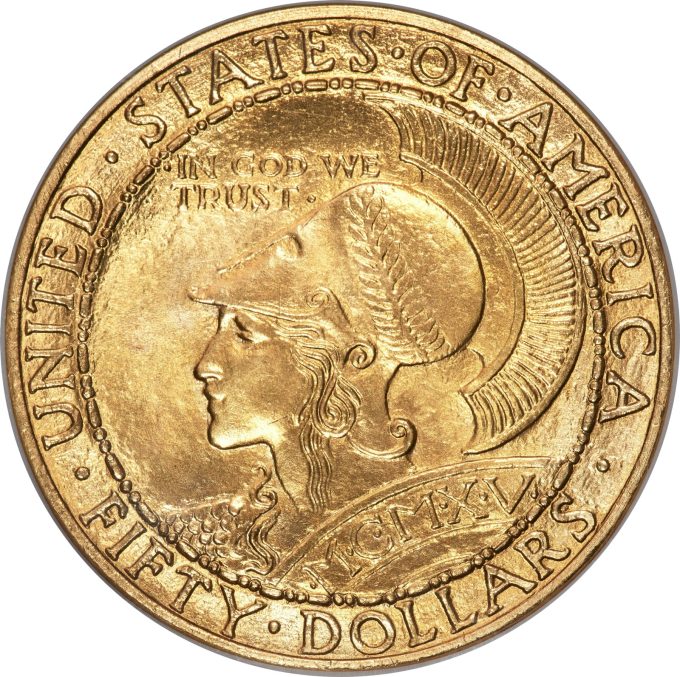
1915-S Panama-Pacific Fifty Dollar, MS65+ - An 1859-S Seated Dollar, MS64, NGC
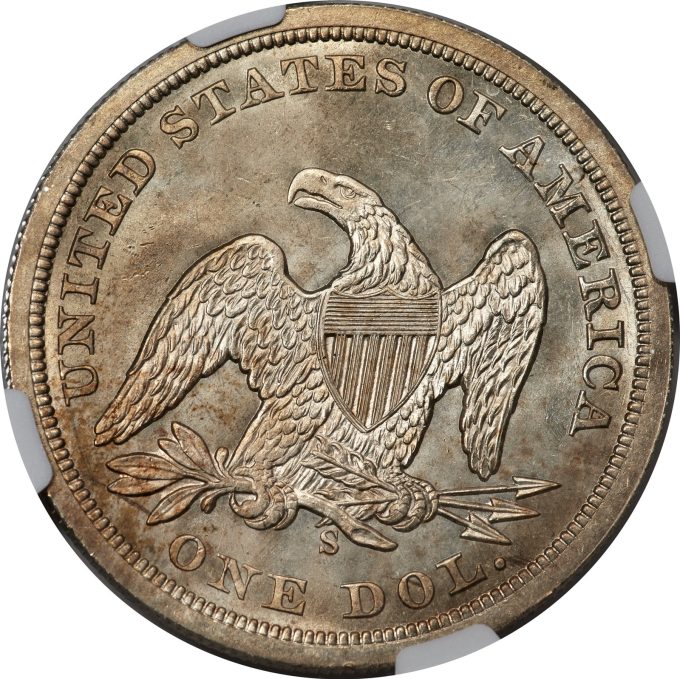
1859-S Seated Dollar, MS64 - An 1801 Draped Bust, Heraldic Eagle Half Dollar O-101, T-2, R.2, AU58 NGC
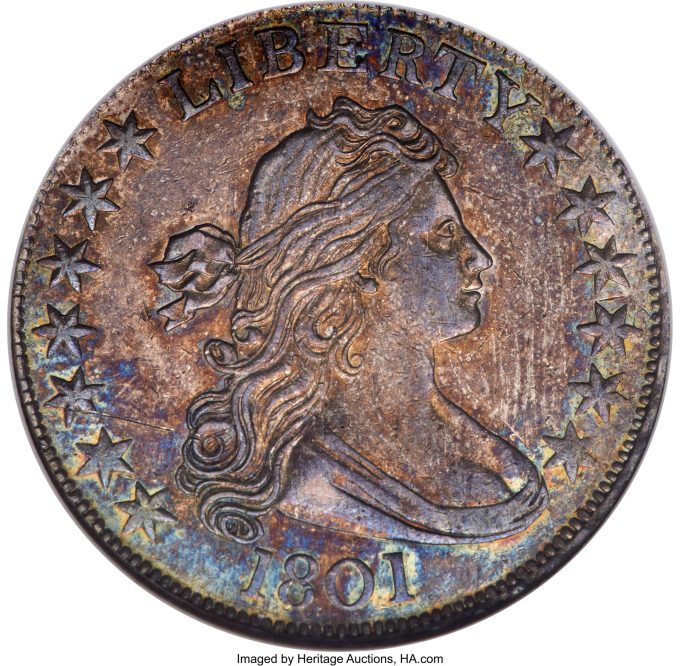
1801 Draped Bust Half, O-101, AU58 - An 1875 Gold Dollar MS63 PCGS. CAC
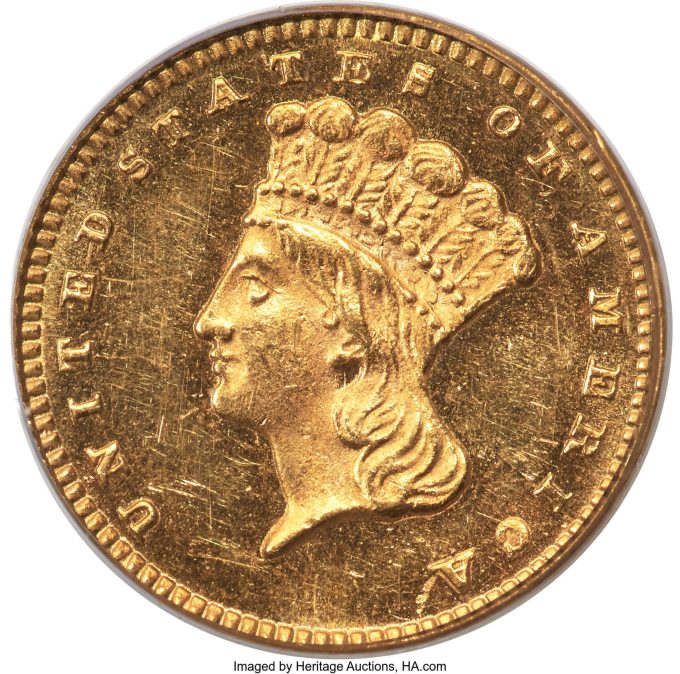
1875 Gold Dollar, MS63
Images and information for all lots can be found at HA.com/1373.
About Heritage Auctions
Heritage Auctions is the largest fine art and collectibles auction house founded in the United States, and the world’s largest collectibles auctioneer. Heritage maintains offices in New York, Dallas, Beverly Hills, Chicago, Palm Beach, London, Paris, Geneva, Amsterdam, Brussels and Hong Kong.
Heritage also enjoys the highest Online traffic and dollar volume of any auction house on earth (source: SimilarWeb and Hiscox Report). The Internet’s most popular auction-house website, HA.com, has more than 1,750,000 registered bidder-members and searchable free archives of more than 6,000,000 past auction records with prices realized, descriptions and enlargeable photos. Reproduction rights routinely granted to media for photo credit.






Absolutely fantastic coins and so much history behind all of these Rarities. I’ll be watching these just for the fun of it. Not in my league, but dreamer coins indeed.. For a Mint 250th 1/2 Dollar design(if they’re doing one?), my vote would be for the 1801 Draped Bust Half as seen near the bottom. A great Liberty representation, no PC going on there, nor any future PC wanted or needed(anymore)please… What’s fascinating to me is the Gold coins back then(mid 1800’s to early 1900’s) were often verified as either genuine or forgeries, by biting the gold leaving tooth indentation… Read more »
I agree Rick. That 1801 is a great execution of a liberty design. That 1799 dollar a little higher up is absolutely a gorgeous design, especially with the technology they had at the time. I saw this a few days ago in an email from Heritage and that liberty design really stood out.